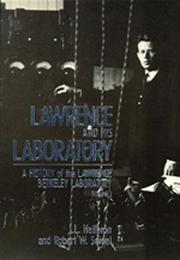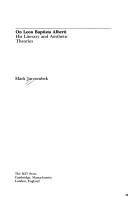| Listing 1 - 2 of 2 |
Sort by
|

ISBN: 0520064267 0585346658 0520341082 Year: 1989 Publisher: Berkeley, Calif. University of California Press
Abstract | Keywords | Export | Availability | Bookmark
 Loading...
Loading...Choose an application
- Reference Manager
- EndNote
- RefWorks (Direct export to RefWorks)
The Radiation Laboratory in Berkeley, California, was the birthplace of particle accelerators, radioisotopes, and modern big science. This first volume of its history is a saga of physics and finance in the Great Depression, when a new kind of science was born. Here we learn how Ernest Lawrence used local and national technological, economic, and manpower resources to build the cyclotron, which enabled scientists to produce high-voltage particles without high voltages. The cyclotron brought Lawrence forcibly and permanently to the attention of leaders of international physics in Brussels at the Solvay Congress of 1933. Ever since, the Rad Lab has played a prominent part on the world stage. The book tells of the birth of nuclear chemistry and nuclear medicine in the Laboratory, the discoveries of new isotopes and the transuranic elements, the construction of the ultimate cyclotron, Lawrence's Nobel Prize, and the energy, enthusiasm, and enterprise of Laboratory staff. Two more volumes are planned to carry the story through the Second World War, the establishment of the system of national laboratories, and the loss of Berkeley's dominance of high-energy physics.
Lawrence, Ernest --- Physicists --- Physiciens --- Biography --- Biographie --- Lawrence, Ernest Orlando, --- Lawrence Berkeley Laboratory --- History --- Physics --- Physical Sciences & Mathematics --- Nuclear Physics --- History. --- Lawrence, E. O. --- LBL --- University of California, Berkeley. --- L.B.L. --- Lawrence Livermore Laboratory --- Lawrence Radiation Laboratory --- Lawrence Berkeley National Laboratory

ISBN: 0262100428 0262367890 9780262367899 9780262100427 Year: 1989 Publisher: Cambridge (Mass.): MIT Press,
Abstract | Keywords | Export | Availability | Bookmark
 Loading...
Loading...Choose an application
- Reference Manager
- EndNote
- RefWorks (Direct export to RefWorks)
A penetrating study of Alberti's writings on philosophy, ethics, aesthetics architecture, and literature.Listen to Alberti's voice. This is what Mark Jarzombek has done in studying virtually all of Alberti's writings on philosophy, ethics, aesthetics architecture, and literature. Jarzombek's thorough grasp of Alberti's thought and painstaking analysis of his elusive identity transform our image of this remarkable man carving out a new place for Alberti in literary theory, art history, and Renaissance scholarship.Instead of warming over the stereotypes of Alberti as a ""universal man"" or as a proponent of ""civic Humanism,"" Jarzombek explores Alberti's views on the relationship between the writer and society. He asserts that, while Alberti was indeed an architect, an art theorist and a man of letters, he was above all a theoretician of writing: ""Everywhere one turns, the problems of writing, authorship and textuality seem to appear, from his first writings... to his last."" Jarzombek, opening the possibilities for a different type of discussion of Alberti and of such major works as De pictura and De re aedificatora, places Alberti more accurately within the context of his times and clarifies the intertextual relationship among his works. Jarzombek's investigation brings to light themes that have remained hidden in the complex world of Alberti's speculations. The Alberti of Jarzombeks book is an outsider struggling to resolve conflicting impulses of pessimism and hope. He is also a profound and willful thinker who, while amalgamating contemporary trends, did not endorse them but countered with a cosmological philosophy of his own.
Alberti, Leon Battista, --- Philosophy --- Alberti, Leon Battista --- -Philosophy --- Criticism and interpretation --- Criticism and interpretation. --- Albert, Leon Baptiste --- Alberti, Leon Batista --- Philosophy. --- Alberti, Leo Baptista, --- Alberti, Leon Batista, --- Alberti, Leonis Baptiste, --- Alberti, Leone Battista, --- Alberti, L. B. --- Alberti, Battista, --- אלברטי, ליאון באטיסטה --- Lepidus, --- Aesthetics. --- Alberti, Leon Battista, - 1404-1472 - Philosophy --- ARCHITECTURE/Architectural History/General --- Alberti, Leon Battista, - 1404-1472
| Listing 1 - 2 of 2 |
Sort by
|

 Search
Search Feedback
Feedback About UniCat
About UniCat  Help
Help News
News